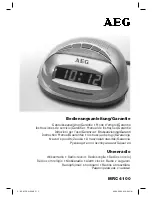
Aspirating Smoke Detector
Maintenance | en
115
Bosch Sicherheitssysteme GmbH
Operation Guide
2018.04 | 2.0 | F.01U.130.926
The tolerance range of the selected airflow threshold and the actual and target values are
represented in the diagnostic software. The boundaries (maximum/minimum) always
correspond to a deviation of ±100 % from the saved target value.
Check the deviation of the actual value from the target value. If there is a deviation of > ±70 %,
you should make a prophylactic check of the pipe system (see section below on
"Troubleshooting airflow malfunction").
Dependent on air pressure
To ensure long-term fault-free operation of the device, the airflow sensor must be calibrated
depending on the air pressure. Only with this type of calibration do low air pressure
fluctuations remain within the monitoring window and thus in the permissible tolerance range.
!
Caution!
If the airflow change is set at less than 30%, an air-pressure-dependent calibration must be
carried out.
Independent of air pressure
If the sensor calibration is carried out independently of air pressure, fluctuations in the air
pressure can cause undesired airflow malfunctions. The calibration of the airflow sensor may
only be carried out this way if you ensure that no fluctuations in air pressure will occur in the
immediate environment.
!
Caution!
If air pressure fluctuations are anticipated in the immediate environment, the airflow sensor
must be calibrated dependent on air pressure.
Troubleshooting airflow malfunction
If the airflow calibration has been carried out depending on air pressure and the actual value
still does not lie within the tolerance range of the selected airflow threshold (airflow
malfunction displayed on the device), then a further disturbance value in addition to air
pressure or temperature fluctuation exists.
!
Caution!
In case of a defect in the airflow monitoring, only authorized personnel may replace the
detector module!
–
In this case, check the pipe system for leaks and obstructions (see Checking Airflow
Monitoring, "Troubleshooting").
–
If this check reveals no malfunctions, check the airflow monitoring by connecting the test
pipe and conducting the functional test in accordance with Conducting the Functional
Test.
–
If, during troubleshooting, the pipe network has been changed, the original configuration
of the pipe network must be restored after the troubleshooting has been completed and
the airflow must be recalibrated.
!
Caution!
It is essential that you adhere to the calibration type (air-pressure-dependent or air-pressure-
independent) and, if necessary, the values for air pressure, height above sea level, and set
voltage in the test log.
Summary of Contents for FAS-420
Page 1: ...Aspirating Smoke Detector FCS 320 TP1 FCS 320 TP2 en Operation Guide ...
Page 2: ......
Page 133: ......
















































